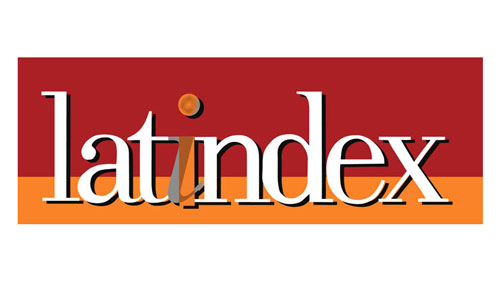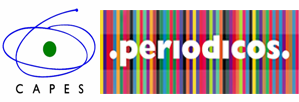Reading speed, prosody, and comprehension results
DOI:
https://doi.org/10.26512/rhla.v18i2.26979Keywords:
Fluency, Prosody, Speed, Comprehension, ReadingAbstract
The impact that the theory of automaticity has traditionally had on the explanation of reader development, together with the rise of concern that schoolchildren should acquire greater reading fluency, has caused a proliferation of studies that focus their attention on the speed of the readers. In general, however, these works have forgotten to interpret how reading prosody affects comprehension. The purpose of this paper is to explain how the variables of speed and prosody affect comprehension on a sample of 72 primary school students. A quantitative correlational method is used for this. The results point out that it is the prosody (and not the duration of the reading) what affects the quality of understanding in reading.
Downloads
References
ADLOF, Suzanne M.; CATTS, Hugh W.; LITTLE, Todd. D. Should the simple view of reading include a fluency component? Reading and Writing, v. 19, n. 9, p. 933-958, 2006.
CALERO, Andrés. Fluidez Lectora y Evaluación Formativa. Investigaciones sobre Lectura, n. 1, p. 33-48, 2014. Disponível em: <http://www.redalyc.org/pdf/4462/446243919002.pdf>. Accesso em: 30 ag. 2019.
CAMARILLO-SALAZAR, Blanca Flor; SILVA-MACEDA, Gabriela. Relación entre velocidad de lectura y comprensión lectora en alumnos de primaria. Memorias del 8vo Congreso Internacional de Educación, p. 45-59. Cd. Obregón, Sonora: ITESO, 2016.
CANTERO, Francisco J. Oír para leer: la formación del mediador fónico en la lectura. En: MENDOZA, Antonio (Coord.). La seducción de la lectura en edades tempranas. Madrid: Ministerio de Educación, Colección Aulas de Verano, 2002a. p. 75-100.
______ Teoría y análisis de la entonación. Barcelona: Edicions de la Universitat de Barcelona, 2002b.
CHAMPEAU DE LÓPEZ, Cheryl. Developing reading speed. Journal of Reading, v. 31, n. 1, p. 50-51, 1993.
DESTEFANO, Joe. Setting and Using Benchmarks for Reading Performance. Research Triangle Park, NC: RTI International, 2017.
DOWD, Amy J.; BARLETT, Lesley. The Need for Speed: Interrogating the Dominance of Oral Reading Fluency in International Reading Efforts. Comparative Education Review, v. 63, n. 2, p. 189-212, 2019.
GOVE, Amber. Early Grade Reading Assessment toolkit. World Bank and RTI International, Washington, DC, 2008.
ESCURRA, Miguel. Comprensión de lectura y velocidad lectora en alumnos de sexto grado de primaria de centros educativos estatales y no estatales de Lima. Persona, n. 6, p. 99-134, 2003. Disponível em: <https://www.redalyc.org/pdf/1471/147118110006.pdf>. Accesso em 30 ag. 2019.
FUGAMALLI, Julieta Carolina; BARREYRO, Juan Pablo; JAICHENCO, Virginia. Niveles de fluidez lectora y comprensión de textos. Traslaciones. Revista Latinoamericana de Lectura y Escritura, v. 4, n. 8, p. 163-186, 2017. Disponível em: <http://revistas.uncu.edu.ar/ojs/index.php/traslaciones/article/view/1063> Acceso em 7 ag. 2019.
GONZÁLEZ-TRUJILLO, M. Carmen et al. Scale of reading fluency in Spanish: measuring the components of fluency/Escala de fluidez lectora en español: midiendo los componentes de la fluidez. Estudios de Psicología, v. 35, n. 1, p. 104-136, 2014.
GOUGH, Philip B.; TUMNER, William E. Decoding, reading, and reading disability. Remedial and Special Education, v. 7, n. 1, p. 6-10, 1986.
GRAY, William. S.; ROBINSON, Helen. M. Gray Oral Reading Test. Indianapolis. In: BOBB-MERRILL. Gray Oral Reading Test, 1967.
JENKINS, Joseph R., et al. Accuracy and Fluency in List and Context Reading of Skilled and RD Groups: Absolute and Relative Performance Levels. Learning Disabilities Research and Practice, v. 18, n. 4, p. 237-245, 2003.
KAMIL, Michael L. et. al. (Eds.) Handbook of reading research, Volume IV. New York City, NY: Routledge, 2011.
KAMINSKI, Ruth A.; GOOD, Roland H. Assessing early literacy skills in a Problem-Solving model: Dynamic Indicators of Basic Early Literacy Skills. En: SHINN, Mark R. (Ed.). The Guilford school practitioner series. Advanced applications of Curriculum-Based Measurement. New York, NY, US: The Guilford Press, 1998, p. 113-142.
LABERGE, David; SAMUEL, S. Jay. Toward a theory of automatic information processing in reading. Cognitive Psychology, v. 6, n. 2, p. 293”“323, 1974.
LEÓN-ISLAS, Eugenio Elías; MAY, Marisol; CHI, Jorge Antonio. Comprensión lectora y medición de fluidez en universitarios de origen maya. CPU-e, Revista de Investigación Educativa, v. l, n. 28, p. 152-182, jan. 2019. Disponível em: <http://cpue.uv.mx/index.php/cpue/article/view/2603/4487>. Accesso em 23 jul. 2019.
MARSTON, Douglas B. A curriculum-based measurement approach to assessing academic performance: What it is and why do it. En: SHINN, Mark R. (Ed.). The Guilford school practitioner series. Curriculum-based measurement: Assessing special children. New York, NY, US: Guilford Press, 1989, p. 18-78.
MARTÃN-BUTRAGUEÑO, Pedro. Entre la prosodia y la sintaxis: variación melódica en el estilo de lectura. En: Moreno, Francisco et al. (Coord.). Homenaje a Humberto López Morales. Trabajos de sociolingüística. Madrid: Arco-Libros, 2003.
MATEO, Miguel. Protocolo para la extracción de datos tonales y curva estándar en análisis melódico del habla (AMH). PHONICA, v. 6, p. 49-90, 2010. Disponível em: <http://www.publicacions.ub.edu/revistes/phonica6/documentos/702.pdf>. Acceso em 30 ag. 2019.
DAANE, Mary C. et al. Fourth-grade students reading aloud: NAEP 2002 Special Study of Oral Reading. (NCES 2006-469). Washington, D.C.: U.S. Department of Education, Institute of Education Sciences, National Center for Education Statistics, 2005
NATIONAL READING PANEL. Report of the subgroups: National reading panel. Washington, DC: National Institute of Child Health and Development, 2000.
NAVARRO TOMÁS, Tomás. Manual de entonación española. New York: Hispanic Society. Madrid: Guadarrama, 1944.
NUTTALL, Christine. Teaching reading skills in a foreign language. Oxford: Heinemann English Language Teaching, 1996.
PETSCHER, Yaakov; KIM, Young-Suk. The Utility and Accuracy of Oral Reading Fluency Score Types in Predicting Reading Comprehension. Journal of School Psychology, v. 49, n. 1, p. 107-29, 2011.
QUILIS, Antonio. Fonética acústica de la lengua española. Madrid: Gredos, 1981.
RAVID, Dorit; MASHRAKI, Yael Epel. Prosodic reading, reading comprehension and morphological skills in Hebrew-speaking fourth graders. Journal of Research in Reading, v. 30, n. 2, p. 140-156, 2007.
RECIO-PINEDA, Sara. Prosodia y comprensión lectora en Educación Primaria. 2017. 448f. Tese de doutoramento (Didáctica de la lengua y la literatura), Facultat d’Educació, Universitat de Barcelona, Barcelona, 2017.
SABATINI, John; WANG, Zuowei; O’REILLY, Tenaha. Relating Reading Comprehension to Oral Reading Performance in the NAEP Fourth-Grade Special Study of Oral Reading. Reading Research Quarterly, v. 54, n. 2, p. 253-271, 2019.
TSUI, Rachel Ka-Ying; TONG, Xiuli; Fung, LEO Shing-Chun. The role of prosodic reading in English reading comprehension among Cantonese-English bilingual children. Speech Prosody, 31 May ”“ 3 Jun, p. 582-586, 2016.
WALCZYK, Jeffrey J.; GRIFFITH-ROSS, Diana A. How important is reading skill fluency for comprehension? The Reading Teacher, v. 60, n. 6, p. 560-569, 2007.
YILDIRIM, Kasim; RASINSKI, Timothy; KAYA, Dudu. Fluency and Comprehension of Expository Texts in Turkish Students in Grades Four through Eight. Education and Science, v. 42, n. 192, p.87-98, 2017.
Downloads
Published
How to Cite
Issue
Section
License
Articles published by the Journal Horizontes de Linguística Aplicada are licensed under a Creative Commons Attribution-NonCommercial-NoDerivatives 4.0 International License.
By publishing in Horizontes de Linguística Aplicada, authors agree to the transfer of economic copyright to the journal. Authors retain their moral rights, including the right to be recognized as the creators of the work.
Authors and readers are free to:
Share — copy and redistribute the material in any medium or format
Under the following terms:
- Attribution — You must give appropriate credit , provide a link to the license, and indicate if changes were made . You may do so in any reasonable manner, but not in any way that suggests the licensor endorses you or your use.
- NonCommercial — You may not use the material for commercial purposes .
- NoDerivatives — If you remix, transform, or build upon the material, you may not distribute the modified material.
- No additional restrictions — You may not apply legal terms or technological measures that legally restrict others from doing anything the license permits.





